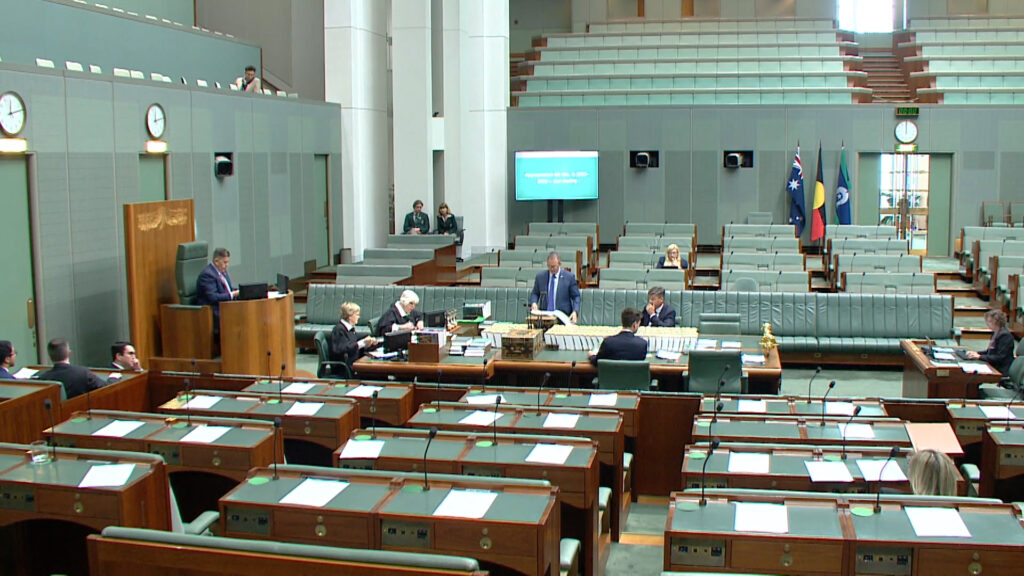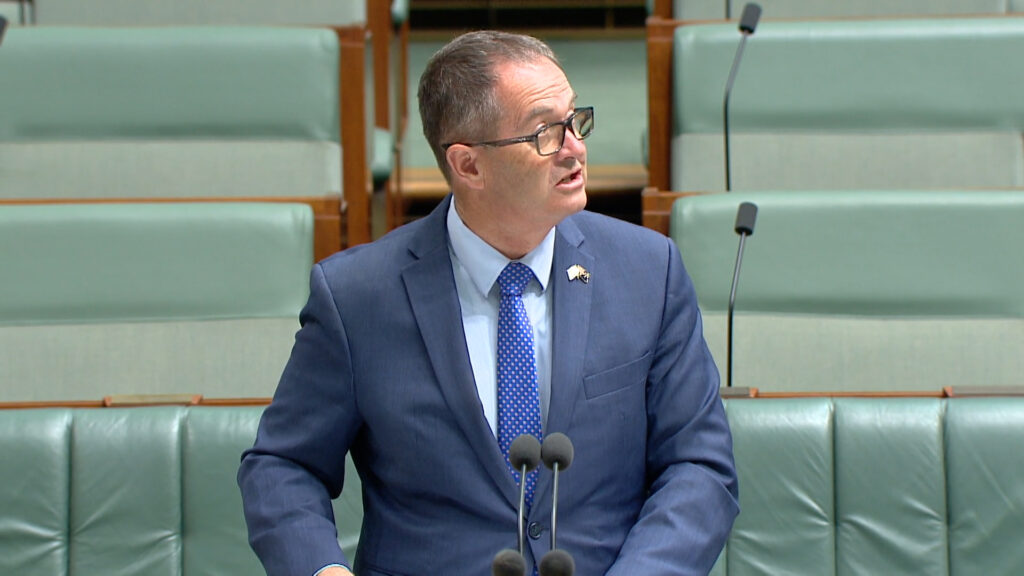House of Representatives Date: 7 October 2025
Speaker:
I give the call to the Member for Fisher.
Andrew Wallace MP:
On behalf of the Parliamentary Joint Committee on Intelligence and Security, I present the following reports: Review of the Listing of Terrorgram as a Terrorist Organisation under the Criminal Code and Advisory Report on the Telecommunications and Other Legislation Amendment Bill 2025.
Reports made parliamentary papers in accordance with standing order 39(e).
By leave, I rise today to present a report on behalf of the Parliamentary Joint Committee on Intelligence and Security for a review of the listing of Terrorgram as a terrorist organisation under the Criminal Code.
Organisations can be listed under the Criminal Code provided the minister is satisfied on reasonable grounds that the organisation is directly or indirectly engaged in terrorism or advocates the doing of a terrorist act. On 27 June 2025, the Minister for Home Affairs announced that the Australian Government had listed Terrorgram, also known as Terrorgram Collective, as a terrorist organisation under the Criminal Code.
The committee’s review examines the minister’s decision to list this organisation. Section 102.1A of the Criminal Code provides that the committee may review a regulation which lists an organisation as a terrorist organisation and report its comments and recommendations to each House of the Parliament at any time.
In determining whether the regulations listing this organisation should be supported, the committee reviewed the merits of the listing with regard to the Minister for Home Affairs’s explanatory statement and statement of reasons for the listing, and other publicly available information. The committee also received a private briefing on the organisation from the Department of Home Affairs.
The statement of reasons makes clear that Terrorgram is a nationalist and racist violent extremist organisation, comprising a group of persons who use a network of various online channels based primarily on the online messaging application Telegram. Terrorgram’s leaders and members create and distribute propaganda with the intent to inspire terrorist attacks on minority groups, critical infrastructure and specific individuals they deem to be against their values.
The organisation advocates for and provides instructions on how to conduct terrorist attacks and has successfully inspired a number of terrorist attacks in the United States, Europe and Asia. The decentralised and encrypted online environment of Terrorgram allows the organisation to operate internationally with few barriers and with membership relatively easily attainable for Australians.
A key concern is Terrorgram’s frequent promotion and praise of the 2019 Christchurch terrorist attack and perpetrator, which it uses as a propaganda tool to radicalise potential members, advocate terrorist actions and spread its violent extremist ideology.
The nature of this organisation is unconventional for a terrorist organisation as it is a decentralised, non-hierarchical network that primarily operates in online spaces. However, the committee is satisfied with the Australian Government’s assessment that Terrorgram is a distinct organisation with identifiable members and leadership figures.
On the basis of the information available to it, the committee agrees with the Australian Government’s assessment that the organisation known as Terrorgram advocates the doing of a terrorist act. The committee is satisfied that the appropriate process has been followed and that the listing has been properly made. The committee therefore supports the listing of Terrorgram under Division 102 of the Criminal Code in order to protect Australians and Australia’s interests, and finds no reason to disallow the regulations.
I also rise to present a report on behalf of the Parliamentary Joint Committee on Intelligence and Security for its review of the Telecommunications and Other Legislation Amendment Bill 2025.
The bill amends the Telecommunications (Interception and Access) Act 1979, the Surveillance Devices Act 2004 and the Crimes Act 1914 with the objective of ensuring key provisions operate as intended and supporting the proper administration of government, law enforcement, national security and criminal justice processes.
The bill consists of five schedules. Schedule 1 would permit network activity warrant information to be used, communicated and recorded to meet disclosure obligations or to be admitted in evidence where necessary to ensure a defendant is afforded a fair trial or to respond to any such information admitted by the defence.
Schedule 2 would transfer the statutory function of the communications access coordinator from the Secretary of the Attorney-General’s Department to the Secretary of the Department of Home Affairs.
Schedule 3 would permit limited access to stored communications to allow agencies to undertake development and testing activities.
Schedule 4 would address a technical issue with the operation of interception international production orders that has prevented orders from being given to US-based prescribed communication providers in certain circumstances.
Schedule 5 would clarify the threshold for authorising and varying controlled operations and subsequently the circumstances in which a participant is protected from criminal responsibility and indemnified against civil liability.
The committee received five submissions to its review of the bill, most of which expressed support for it, in whole or in part.
These are technical but important amendments intended not to create entirely new laws or powers, but to clarify existing obligations and ensure the workability of particular provisions within the telecommunications law that enable the crucial work of our national security agencies.
The committee has recommended that the bill be passed without amendment.
I commend both reports to the House.
END
Media Contact: Brendan West – 0402 556 646 – Brendan.west@aph.gov.au


